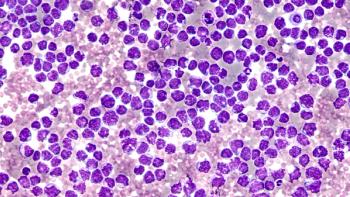
Patients With IPF Face QOL Challenges With Antifibrotic Treatment
Key Takeaways
- Antifibrotic treatments for IPF, such as pirfenidone and nintedanib, are associated with significant side effects impacting quality of life.
- Despite side effects, patients perceive antifibrotics as beneficial in slowing disease progression, with many expressing hope from treatment.
Patients reported that side effects often impacted their quality of life (QOL). However, most patients said their treatment helped slow disease progression and gave them hope.
Despite being satisfied with treatment, the overwhelming majority of patients with idiopathic
The findings come from 106 patients across the United States participating in a qualitative interview or an online survey, the majority of whom had experience taking an antifibrotic. Researchers of the study detailed their findings in
“This study included a higher number of people currently taking antifibrotics relative to large, claims-based US samples that demonstrate low rates of exposure to antifibrotic treatment,” detailed the group. "For those taking antifibrotics, the majority felt treatment was helping to slow their disease progression, although many recognized that it may not be possible to know how much they are benefiting as an individual."
More than 3 in 4 of the patients taking antifibrotics said that taking their treatment gave them hope, and approximately 2 in 3 patients said taking an antifibrotic helped slow progression of their disease, though 90% acknowledged at least 1 side effect as a result of treatment.
Antifibrotic treatment included pirfenidone,
Overall, 66% of patients responding to the survey had ever taken an antifibrotic, with 23% only ever having taken pirfenidone, 32% only having taken nintedanib, and 10% having taken both.1 Adverse events associated with pirfenidone and nintedanib included fatigue, weight loss, and stomach problems.
Patients often managed their treatment on their own, with more than half of patients adjusting the dose of their antifibrotic, either by lowering their dose, skipping doses, or interrupting treatment. Patients stopped taking their antifibrotic a median of 2 times.
The side effects reported by patients significantly impacted QOL based on survey findings, highlighting tolerability shortfalls of current treatment, explained the researchers. Among the 87% of patients who reported shortness of breath or other breathing troubles, for example, 41% reported it as being “very burdensome.” These patients experienced trouble keeping up with their loved ones, doing their hobbies, and other tasks.
Supplemental oxygen has been used to help improve QOL among patients, though the option also presents a burden, requiring heavy equipment and difficulty with using the equipment.
Notably, patients often described delayed diagnosis before receiving treatment, first being assessed for other conditions for their symptoms due to comorbid conditions, such as asthma and obesity.
The majority (83%) of patients were taking at least 3 prescriptions, and 16% were taking over 10. Comorbidities included obesity, which was significantly more common in women (35%) than men (15%).
“The participants in this study reported a high level of comorbid conditions (88% with at least one comorbidity) which likely made the diagnosis of IPF more challenging,” explained the researchers.“The presence of so many comorbid conditions, while not surprising in an older patient population, suggests that careful, coordinated diagnosis and treatment by the IPF-treating provider and the rest of the patient’s care team will improve their overall care.”
References
- Graham CS, Bisson B, Shore J, et al. Perspectives of people living with idiopathic pulmonary fibrosis: a qualitative and quantitative study. BMC Pulm Med. Published online May 8, 2025. doi:10.1186/s12890-025-03689-8
- FDA approves medicine for idiopathic pulmonary fibrosis. Genentech, Published October 15, 2014. Accessed May 23, 2025.
https://www.gene.com/media/news-features/medicine-fda-approved-for-idiopathic-pulmonary-fibrosis - FDA approves Boehringer Ingelheim’s OFEV (nintedanib) as first kinase inhibitor to treat idiopathic pulmonary fibrosis. Published October 15, 2024. Accessed May 23, 2025.
https://www.boehringer-ingelheim.com/us/media/press-releases/fda-approves-ofev-nintedanib-treat-ipf-bi-us
Newsletter
Stay ahead of policy, cost, and value—subscribe to AJMC for expert insights at the intersection of clinical care and health economics.













































